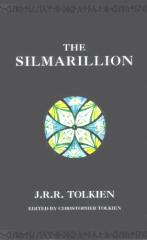John R. R. Tolkien
Englischer Schriftsteller und Philologe John Ronald Reuel Tolkien (Bloemfontein, heute Republik Südafrika, 3. Januar 1892 – Bournemouth, England, IX 2, 1973). Studium an der Universität Oxford, wo er sich intensiv mit klassischen und germanischen Sprachen beschäftigte; dort unterrichtete er später Altenglisch (1925–45) und Mittelenglisch (1945–59). Er schrieb fantastische Geschichten und Romane, inspiriert von germanischen Epen und nordischen Sagen. Darin beschrieb er eine imaginäre Welt, Mittelerde, in der verschiedene Wesen leben: Elfen, Zwerge, Hobbits, Orks usw. Als leidenschaftlicher Philologe erfand er auch spezielle Sprachen für sie, meist basierend auf Finnisch und Walisisch. Seine Werke wurden in Dutzende Sprachen übersetzt und in Millionenauflagen veröffentlicht. Weltruhm erlangte er mit dem dreiteiligen Roman „Der Herr der Ringe“ (1954–55), der von Regisseur Peter Jackson (2001–03) verfilmt wurde. Auch sein Werk „Der Hobbit“ (Der Hobbit, 1937) erfreut sich großer Beliebtheit. Unter den philologischen Studien sticht Beowulf: the Monsters and the Critics (1936) hervor. Mit seinem Werk prägte er maßgeblich die Fantasy-Genre in Literatur, Film und bildender Kunst (Comics).
Zitat: Tolkien, John Ronald Reuel. Kroatische Enzyklopädie, Online-Ausgabe. Lexikographisches Institut Miroslav Krleža, 2021. Zugriff am 17. November 2023.
Titel im Angebot
The Silmarillion
Das Silmarillion (1977), ein posthum veröffentlichtes Werk von J.R.R. Tolkien, herausgegeben von seinem Sohn Christopher. Dieses epische Buch ist eine mythologische Geschichte der Welt von Arda, von der Erschaffung des Universums bis zum Ende des Ersten Z
